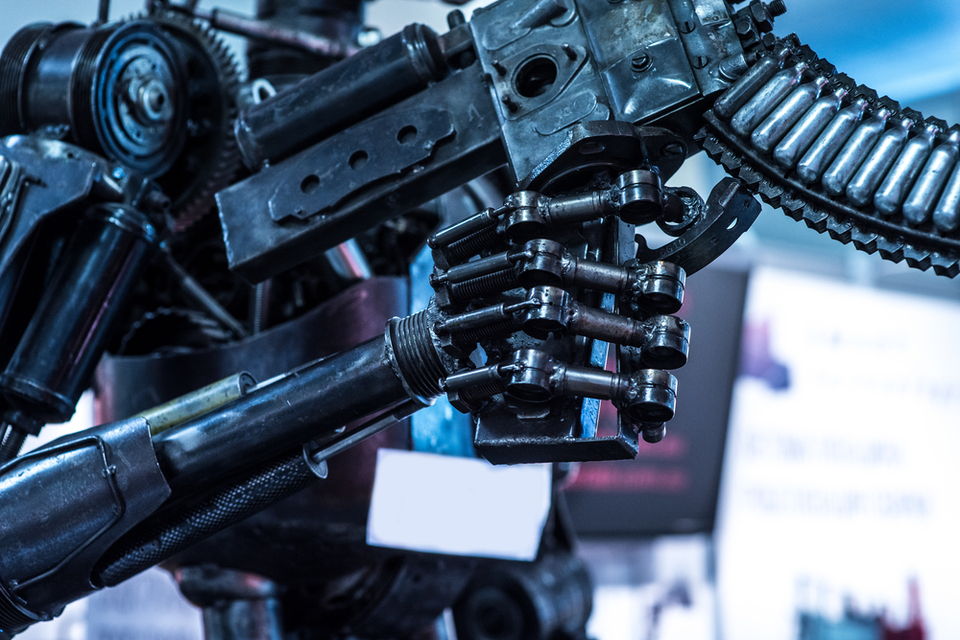Armies and military contractors are racing to put robots on the battlefield. For the United States, the Pentagon has a dream of a futuristic war without human casualties. Besides quintessential Star Wars battle droid-like soldiers, robot warriors are taking a myriad of forms and functions.
From crossbows to catapults to gunpowder, we have entered now what can be described as the fourth age of warfare. Since 1945, developed warfare has been moving towards automation.
Robot soldiers take more forms than the Terminator, and they fight on multiple battlefield mediums.Click To TweetSeveral countries are investing massively in the development of military robotic technologies, including downsizing troop installations and using drones for many wartime functions.
Robot Soldiers: Swarm Drones
In the air, drones, which got their rudimentary start in the Vietnam War, are progressing. They can now be implemented for offensive and defensive purposes.
Artificial intelligence now makes possible groups of small drones that collaborate with each other to fulfill their missions. The U.S. Navy recently unveiled its swarm of drones, referred to as LOCUST.
Cyber Spies
Cyberspace is vulnerable to threats and conflicts. Espionage, data theft, and acts of sabotage can target public administrations and strategic instructions. Weapons factories, space agencies, and energy operators have been victims of cyber attacks for years.
In 2010, the Stuxnet virus made headlines. This virus has contaminated Iranian computers and especially those used in its nuclear weapons program. Unlike biological viruses, Stuxnet seems to have been custom designed to sabotage exclusively electronic power supplies of nuclear centrifuges in Iranian Natanz plants.
Biological Weapons
Biological weapons attack living organisms with toxic substances and synthesized pathogens, genetically enhanced to cause the utmost damage.
With their low cost, massive effect, and specificity, infectious agents are ideal weapons for those without regard for international wartime laws. Now, with different means of dispersion such as the aforementioned drone swarms, these weapons are more dangerous than ever.
This menace is so serious that the Pentagon has even devised a plan in case of zombie outbreak.
Biometric Malware
The rise of social networks, virtual identities, and overall connectivity turns the web into a battlefield. More and more attacks are directed towards this facet of our lives.
We can now imagine AI malware specifically disguised as a harmless app or a screensaver. It would gather information in order to mimic the identity of a target in a comprehensive way. From personal info, voice, facial features, fingerprints and even retinal scans, these systems could impersonate anyone.
This would be a nightmare for the average joe, but if the target was a high-ranking military or political figure, war could be changed forever.
Out of the possible robot soldiers we’ve discussed, which are you most afraid of?













Comments (0)
Most Recent